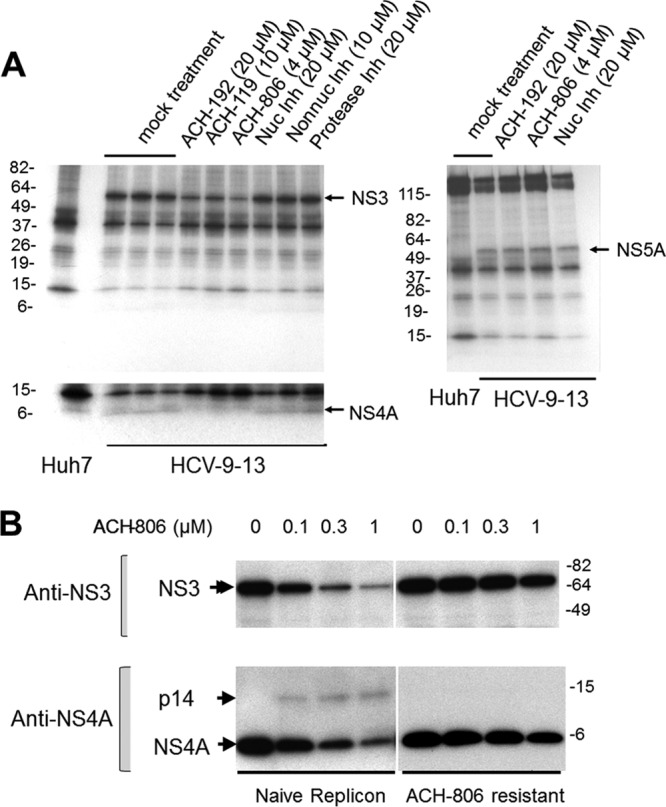Fig 7.

Effects of ACH-806 on NS3 and NS4A stability and on the amounts of p14, NS3, and NS4A in naive and resistant replicon cells. (A) Effect of ACH-806 on NS3 and NS4A stability. Huh-9-13 replicon cells were pulse-labeled with [35S]methionine-cysteine for 2.5 h, followed by a short chase (0.5 h) with complete medium. ACH-806 (4 μM), the two ACH-806 derivatives ACH-192 (20 μM) and ACH-119 (10 μM), NS5B nucleoside inhibitor (Nuc inh, 20 μM), NS5B non-nucleoside inhibitor (Non-nuc Inh, 10 μM), and protease inhibitor (20 μM) were added, and cells were further incubated overnight before the cells were lysed. Lysates were divided into two equal parts: each was subjected to immunoprecipitation with anti-NS5A (right panel) or anti-NS3 antibody (left panel), respectively, and followed by SDS-PAGE and fluorography. The lower left panel is a longer exposure of NS4A. Since the inhibitors were added after the pulse-labeling and chase periods, any differences in the amounts of pulse-labeled NS3, NS4A, and NS5A must represent differences in their degradation rates in response to inhibitor treatment. Molecular masses are shown on the left in kilodaltons. The positions of viral proteins are indicated on the right of each panel. (B) Effects of ACH-806 on the amount of p14, NS3, and NS4A in resistant cells. An ACH-806-resistant cell line that harbors a replicon carrying a C16S substitution in the N-terminal region of NS3 was chosen to compare the effects of ACH-806 on the amounts of p14, NS3, and NS4A to its parent (naive) replicon cell line Huh-9-13. After 16 h of treatment with ACH-806, cell lysates were subjected to SDS-PAGE and Western blotting with anti-NS3 and NS4A antibodies, respectively. The positions of viral proteins are indicated on the left. Molecular masses are indicated on the right in kilodaltons.
